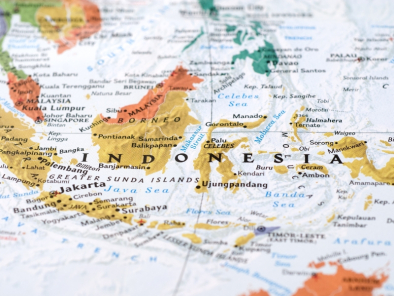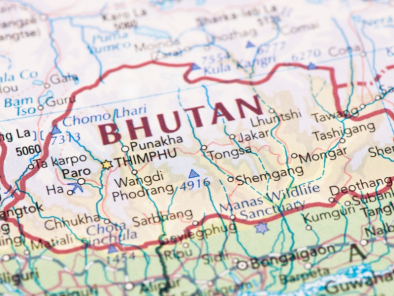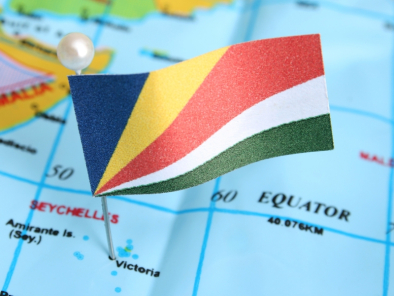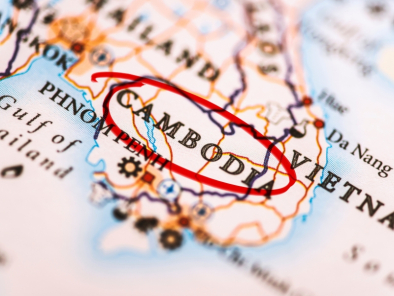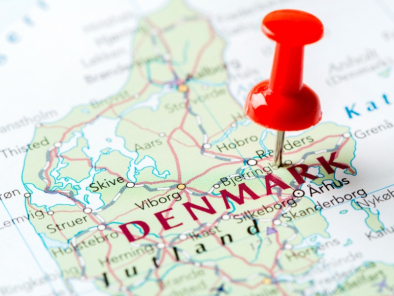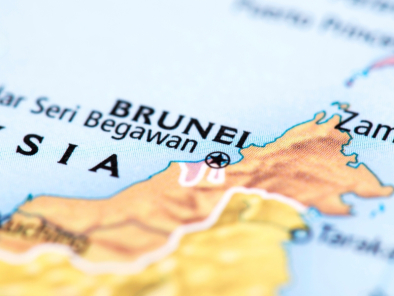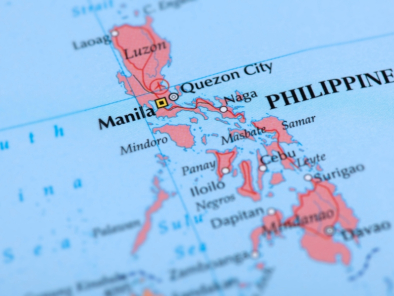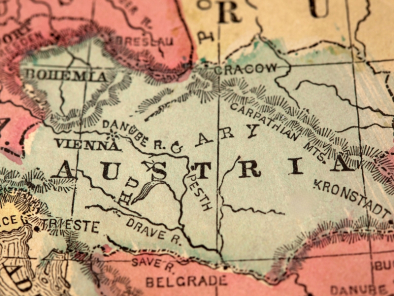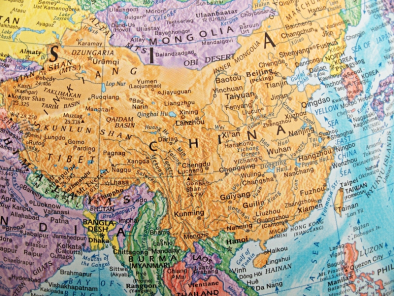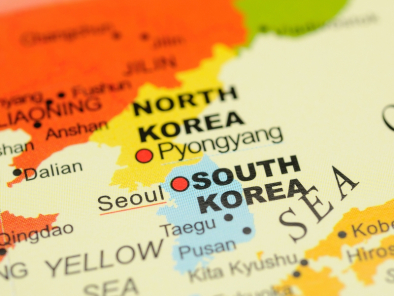
Posted by: Leo Travel HUb
TRAVEL TIPS FOR KOREA
South
Korea is a country swathed in green, prodding its stony fingers skyward, and
the Koreans are a people obsessed with nature, and with mountains in
particular. Wherever you travel, you'll see Koreans out in the open air, clad
in the latest adventure fashions, pushing ever onward and upward.
With China looming to its west and Japan nudging it from the east, it's no wonder the country has played unwilling host to centuries of war games. But no matter how many times its neighbours try to swallow it, South Korea manages to survive intact.
Visa The visa is to be obtained prior to arrival in the country
How to get
there:
There are flights from Mumbai and Delhi on Korean Air, Cathay Pacific, Air India, Thai Airways, Singapore Airlines.
Climate:
Korea has four distinct seasons, with a wet monsoon/summer in the middle of the year and a very cold winter from November to March. Time your visit to South Korea for autumn (September to November). It's sunny, the skies are blue, and Korea's spectacular autumn foliage is a real draw. Winter is cold but dry, and a good time to visit if you like skiing, snow-draped temples, a dearth of tourists and below freezing weather. Spring (April to May) can be beautiful, but its also the most popular time with many tourists and you'll have trouble getting mid to top-end accommodation. Summer is hot, muggy, crowded, wet, typhoon-prone and expensive.
Health:
Avoid tap water unless it has been boiled, filtered, or chemically disinfected (e.g. with iodine tablets); only eat fresh fruit and vegetables that’s been cooked or peeled; be wary of dairy products that might contain un-pasteurised milk, and be highly selective when eating food from street vendors. If you develop diarrhoea, be sure to drink plenty of fluids, preferably an oral re-hydration solution containing lots of salt and sugar.
Electricity:
The current is either 110 or 220 volts AC, 60 Hz. You'll find plugs with two flat pins (110 volts) or with two round pins (220 volts). Visitors from abroad who wish to operate personal small electronic items, should bring a plug adapter and a transformer
Languages
Spoken:
Korean is the official language.
Getting around:
Transport
in Korea is of a high standard. Trains are reliable, roads are in good condition
and buses ply every imaginable route in and between towns and cities.
Cycling is an extremely popular way of getting around but be warned, traffic moves fast and not always with the greatest concern for cyclists so take care if you choose to cycle in urban centres. Outside the cities it's a pleasant way to get around but a reasonable amount of fitness is required, the terrain can very variable.
By Train
The
Korean National Railroad runs the entire network and contrary to the norm in
many countries of East and Southeast Asia, trains are reliable, clean and run
to strict schedules.
The
intercity network connects all major cities and is comprised of the Superexpress and the Mugunghwa Express. The former is the
more expensive but is the fastest network and offers higher levels of comfort
than the Mugungwha Express network. Superexpress trains ply most major routes
from Seoul, including to Busan and Incheon.
Tongil trains
are slower and cheaper and tend to be used for more local journeys. There are
lower classes of trains below this as well, although these really take a long
time and aren't suitable for journeys of any real length.
Train
travel is cheaper at weekends but costs are low by international standards even
for the Saemaeul Superexpress.
Tickets
can be bought from stations, and you can reserve seating (compulsory on some
services). You are advised to book your seat in advance on any intercity
journey especially if travelling during weekends or holidays. Mugungwha Express
services have standing room but this can be uncomfortable over long distances.
A rail pass is available for foreign visitors. Called the KR Pass, it covers travel on the entire rail network as well as discounts on booking sleeping compartments should you require them on intercity journeys.
By Bus:
The
bus network is a cheaper alternative to the train but can be unsuitable for
very long journeys. Express buses are the fastest and run non-stop (apart from
rest periods) between major city destinations. Intercity buses may make more
intermittent stops between termini.
Express
bus tickets are offered in first and standard class. Buses are usually
air-conditioned and can offer entertainment and refreshments. Rest breaks are
frequent to allow passengers to stretch their legs.
However you should note that intercity buses are not tourist buses and timetables and info will not be issued in foreign languages. Dedicated tourist buses are available on popular routes to tourist destinations. From Seoul buses leave for major cities including Busan, Daegu, Daejeon, Gwangju, Incheon, Jeonju, Busan and Ulsan.
By Air:
Korean Air provides internal flights, although the cost rarely makes it worthwhile compared to the train network. Flights are useful when trying to reach the island Cheju. Alternatively the ferry journey from Busan can take several hours and only leaves once a day.
By Boat:
Ferries
are a way of life in Korea. Ferry services prove to be indispensable when
accessing thousands of islands off the southern mainland coast. A ferry leaves
once a day from Busan to the island of
Cheju Do.
Another service plies the South coast route from Mokpo to Busan while the Yosu hydrofoil departs five times a day from the port for the nearby island via Ch'ungmu.
International
Airport:
The
modern, state-of-the-art Incheon International Airport, on an island just off
the coast west of Seoul, functions as the main international gateway to Korea.
Seoul's
smaller Kimpo Airport is located
about 15km west of Seoul city centre. It mainly deals with domestic flights
from elsewhere within Korea, but does have one scheduled international
connection to Japan.
Getting Around
in the city from Kimpo Airport:
Ferry: The
least convenient form of transport, there are services to the ports of Yul-do
and Wolmi-do on the mainland costing KRW1000, but you will still need to take a
bus into central Seoul.
Buses: serve Kimpo en route to
Incheon. Again, there are numerous operators offering services to various
destinations. Prices start at around KRW700 for an "ordinary" bus.
The journey should take around 45 minutes.
Subway: Kimpo is connected to the
city by Seoul's subway (line 5). Trains leave every 10 minutes or so. It costs
KRW800 for a ticket to the city centre (KRW900 if you pay in cash), and you
should buy your tickets from the vending machines before entering the platform.
Expect it to take around 20 minutes to reach the city.
Taxis: from Kimpo take around 45
minutes to reach the city centre. There is a comprehensive public transport
system in Seoul but the most efficient way of getting around is the underground
subway rail system.
Getting Around
in the city:
Subway:
The
clean, efficient subway runs to most major destinations within Seoul and is
easy to use. The lines are numbered, making it simple to find the right one,
and maps and signs are clearly marked in English as well as in Korean script.
The network is divided into two "service areas," or "zones" which determine the price of your journey. Tickets can be bought at vending machines in stations. Multi-lingual machines can be found in main stations.
Buses:
Buses are more difficult to navigate if you can't read hangul (the Korean
alphabet) or Chinese characters, as destination signs on the front of buses are
not written in English. If you do need to catch a bus, you'll find that
generally people are willing to help you find your way around; students are
often especially glad to get a chance to practise their English so don't be
afraid to ask.
There
is a flat fare of KRW700 for adults for all trips within the city. Fares can be
paid on the bus or in advance by buying a ticket at one of the booths located
near stops.
Taxis:
Taxis are plentiful on the streets of Seoul. The cheapest option is to hail a cab in the street or pick one up at a taxi rank, though your hotel will be able to call one for you if you want to be collected at the door.
Currency:
Currency:
Korean Won (KRW)
Notes: KRW1000, 5000 and 10000
Coins: KRW10, 50, 100 and 500
Credit cards: Korea is largely a
cash-based society and you should carry more cash than you would if you were in
a Western society. If Korean Won are not available you are advised to carry US
dollars.
Credit
cards, including Visa, American Express and MasterCard are accepted in large
department stores and major hotels but not in smaller hotels, or many shops and
restaurants.
Traveller's
cheques
can be exchanged at Korean banks or large hotels. They will not generally be
accepted in restaurants, shops or small hotels. You are advised to take
traveller's cheques in US dollars. Banks will also change foreign currency but
you are advised to carry US dollars if Korean won are not available.
You
can use your credit or debit card to withdraw cash from ATMs but you may
experience difficulty using certain cards and locating networked cash machines.
You should check with your card issuer before travelling as to whether it will
be possible to use your card in South Korea and what charges apply should you
do so.
Be aware that all instructions are provided in Korean. ATMs are available at banks, the airport, major hotels, department stores, subway stations and tourist attractions.
Tipping:
Tipping is not customary in Korea. A 10% service charge is added onto the bill at all hotels. It is not necessary to tip taxi drivers unless they provide a special service such as carrying your bags. VAT, at a standard rate of 10% is levied on most goods and services and is included in the price.
CITIES:
SEOUL
Seoul
is the throbbing financial and industrial centre of South Korea. This
metropolis is one of Asia's most important cities, and most tourists will
arrive here. Seoul warrants exploration for its twenty-first century
architecture that sits admirably with temples hundreds of years old.
Outside
of Seoul, the country has very strong scenic qualities, replete with
architectural and historical treasures. The most notable being the Tripitaka Koreana, a collection of 13th
century printing blocks inscribed with Buddhist texts.
Just
off the coast, particularly the south, are literally hundreds of islands,
ranging in size from rocky outcrops, home to puffins, to semi-tropical sandy
paradises to the large volcanic island of Jeju-do with its unique culture and
dialect. The South coast itself contains some wonderful stretches of white
sands, and enjoys a sub-tropical climate that makes for a fantastic beach
holiday
There
is a massively rich and satisfying variety of things to see and do here, for
both residents and visitors alike. Must-sees include the magnificent Chongmyo Shrine and the impressive Royal Tombs. You should also make time
to experience the cultural splendour of traditional Samulnori drama, set to percussion, or its modern incarnation the
famous Nanta (Cookin') Theatre,
which replaces traditional instruments with kitchen items in a fabulous and
innovative display of music and dance.
A
city of contrasts, Seoul is for many the archetypal Asian metropolis - ancient
tradition and history juxtaposed with modern technology and architecture.
At
first sight, Seoul looks like any modern city: noisy, crowded and vibrant, the
streets constantly full of traffic and people rushing in and out of high-rise
tower blocks and swanky department stores, in a hectic flurry of swish designer
suits careering through revolving doors.
The
city is the financial and in many ways, cultural centre of South Korea and as such, stands proud
at the helm of this nation that has developed so quickly and successfully over
the last few years. As if to celebrate this fact, Seoulites tend to work and
play hard: nestled between the office blocks are numerous bars and restaurants,
shops and markets. Equally popular are the entertainment complexes housing
cinemas and theme parks on an enormous scale.
It
only takes a brief foray behind the scenes, however, to discover the other
Seoul: this is the Seoul of ancient royal palaces and temples, of peaceful
gardens and lakeside pavilions, hidden away behind the high-rises and modern
hotels. To catch a glimpse of the secret garden of Changdeokgung Palace or the Hyangwonjeong
Pavilion at Gyeongbokgung Palace
is to be transported back to another age and seemingly another culture. Indeed,
the palaces of Seoul are one of this modern city's top attractions: built at
various periods in the long-lived Joseon
Dynasty (1392 to 1910), they dominate much of the city centre with their
expansive parkland. Interspersed with these are the shrines and temples of the
city, still used for traditional festivals as they have been for centuries.
So whatever your reason for coming to Seoul, whether to follow the post-World Cup trail, or to lose yourself in its history, you will not go away disappointed. A warm welcome awaits in this urban phenomenon.
Gyeongbokgung Palace:
Gyeongbokgung
is arguably the most beautiful palace in Seoul, with its series of halls,
pavilions and stone pagodas set within expansive parkland.
Built
originally at the end of the 14th century in the Joseon Dynasty, the palace was destroyed by the Japanese in 1592
and not rebuilt until the 1860s. A further programme of rebuilding was
undertaken in the late 20th century. The impressive Geunjeongjeon with its
ornate ceilings is the main hall where the king presided over the affairs of
state, behind which is the large Gyeohoeru pavilion built over a man-made pond.
A short walk away is the smaller hexagonal Hyangwonjeong pavilion secluded by maple
and pine trees on a tiny island in the middle of Hyangwongji pond.
Add: 1, Sejongno, Jongno-gu. Open: Tue-Fri 09h00-18h00; Sat & Sun 09h00-19h00.
National
Museum of Korea:
The
excellent National Museum houses an extensive collection of Korean artefacts
and artwork, providing a fascinating insight into the cultural and religious
history of the country.
Among
the exhibits are Buddhist statues, 12th-century green Celadon pottery and other ceramics, ancient manuscripts and
traditional Korean paintings. There is even a gallery of Korean tiles and
bricks from various stages of history (which is more interesting than it
sounds) donated to the museum by a Japanese man, Iuchi Asao, who devoted his
life to accumulating this unique collection.
Add: 168-6 Yongsan-dong 6 ga, Yongsan-gu. Open: Tue, Thur & Fri 09h00-18h00; Wed & Sat; 09h00-21h00; Sun 09h00-19h00.
Changdeokgung
Palace:
Changdeokgung is famed for its enticingly named "secret garden" or biwon, a lovely area of woods, flowers, ponds and pavilions laid out in traditional Korean style and originally used as a private garden for royalty.
A
World Heritage site dating from the early-15th century, the palace is
remarkably well preserved. Visitors have to take a guided tour of the palace
and its grounds, which, although not covering every nook and cranny of the
complex, provides a good general idea of the best areas as well as some
interesting facts about the palace's history.
Add: 1, Waryong-dong, Jongno-gu. Open: Tue-Sun 09h15-17h15 (summer); 09h15-16h00 (winter). English language tours at 11h30, 13h30, 15h30.
Jongmyo
Shrine:
Built
to honour the Kings of the Joseon (Yi)
Dynasty, the attractive Jongmyo
(Royal Ancestors' Shrine) complex contains a number of traditional shrines
and the tablets of 27 Kings and Queens in its forested grounds.
The
shrine is still a major place of worship and is the site of an annual memorial
ceremony in early May, when the main shrine is opened up to the public and
descendants of the royal family visit in traditional costume. This is a
particularly good time to visit, but in any season, the complex has some
beautiful examples of Confucian shrines, well worth seeing.
Add: 1-2, Hunjeong-dong, Jongno-gu. Open: daily 09h00-18h00 (Mar-Oct); 09h00-17h00 (Nov-Feb). Admission: KRW1000, adults; KRW500, children. (closed Tuesdays). Tel: +82 (0)2-765-0195.
Mount Namsan
Park:
A
good place to see some greenery amid the bustle of the city, the large Namsan mountain and parkland is a
popular place for walking and jogging in the centre of Seoul.
The main attraction here for visitors is Seoul Tower at the top of the mountain, which can be reached on foot or by cable car. With its prime position, this is the best observation point for seeing the whole city and has a revolving restaurant if you want to enjoy a meal while admiring the view.
The
park also contains a small zoo,
botanical gardens and pavilion. If you don't mind being labelled a tourist,
it's excellent fun to take the cable car (which can be picked up from
Myeong-dong subway station) for a tour of the park with stops at all the main
places of interest.
Jung-gu/Yongsan-gu. Admission to Seoul Tower Observatory: KRW7000, adults; KRW5000, children. Cable car operating hours: 10h00-22h30.
Namsangol
Village:
This
"village" consists of five traditional Korean houses, all in different
styles. The predominantly 19th-century buildings have been moved from various
parts of the country to this spot and provide a fascinating insight into
traditional domestic architecture. They range from mansions such as the Park Yeong-hyo Mansion, originally home
to the husband of Princess Yeonghye,
to the Residence of Yi Seung-up, a
carpenter to the Royal Family.
The site also has a pretty traditional garden as well as a permanent craft exhibition and regular performances of traditional music and dance.
84-1, Pil-dong 2-ga, Jung-gu. Open: daily
09h00-18h00 (Mar); 09h00-19h00 (Apr-Oct); 09h00-17h00 (Nov-Feb). Closed
Tuesdays.
Jogyesa
Temple
As
the headquarters of the Jogye order of
Buddhism, which has more adherents than any other sect in Korea, Jogyesa is
a major place of pilgrimage for Korean Buddhists.
For
foreign visitors, the temple provides an interesting insight into Buddhism as
well as having some attractive statues and paintings that are worth seeing even
for the most devout atheist. The temple itself was built in 1910 in traditional
style and is surrounded by trees and a pagoda. If you are in Seoul during May,
it is worth checking to see if your stay coincides with the Lotus Lantern
Festival, when the temple is illuminated with lanterns and colourful religious
ceremonies take place.
Add: 45, Gyeonji-dong, Jongno-gu. Open: daily 04h00-21h00.
Deoksugung
Palace:
Inside
its stunning red gated entrance, Deoksugung contains the National Museum of Contemporary Art and the Royal Museum, housed in
the pillared colonial-style Seokjojeon
Hall, which looks somewhat out of place in its surroundings.
The
two museums are both worth visiting; the Royal Museum displays clothes and
jewellery belonging to the Joseon Kings and Queens while the Museum of
Contemporary Art specialises in modern Korean paintings, sculptures and
artworks. The palace also has some fine traditional halls and pavilions. If you're
here between April and November, try to time your visit to coincide with the Guard Changing Ceremony which takes
place every Saturday and Sunday at Taehan-mun Gate from 14h00-15h30
(15h00-16h30 July and August).
5-1, Jeong-dong, Jung-gu. Open: Tue-Sub 09h00-21h00 (Mar-Oct); 09h00-16h30 (Nov-Feb).
War Memorial:
Though
built partly to commemorate Koreans killed in battle, the War Memorial is in
fact a museum devoted to the history of conflict in Korea. The exhibitions lead
you from prehistoric battles and the Three Kingdoms Period when Korea was
subjected to incursions by the Chinese and Japanese through the Mongolian
invasions during the Goryeo Period
to the 20th-century Japanese occupation and Korean Wars. This is obviously a
must-see for war aficionados, but even those not particularly interested in war
are likely to find this informative look at Korea's history very revealing.
Add: 8, 1-ka, Yongsan-dong, Yongsan-ku. Open: Tue-Sun 09h30-18h00 (summer); 09h30-17h00 (winter).
Excursions:
Seroaksan
National Park:
An
ideal combination of mountains and beaches are found all over Northeast Korea.
Historical sites and beautiful scenery can be found everywhere, as well as ski
resorts and other recreational facilities.
In
the midst of all this is Seroaksan,
Korea's most popular national park. Within its boundaries the park is a
pristine region of soaring granite peaks, luxuriant green valleys and dense
forest. The park is divided into South
Seroak, Inner Seorak and Outer Seorak.
In
between rises Dae-Cheongbong, the
region's highest peak, with its summit reaching 1708m above sea level. Walking
trails criss-cross the entire park, and are of varying difficulty. The
spectacular 45m-high Biryong Waterfall
is one of the most popular sights. The name means "Flying Dragon" and
it is just one example of the many mythical tales that accompany the most
spectacular features of Seorak. A local guide or book will be able to tell you
the many fascinating stories connected to the park.
Located west of Sokcho, 30 minutes by bus from the Intercity Bus Terminal. The park does have an admission charge although if you travel as part of a group tour this should be included in the cost.
Suwon:
Just
50km south of the capital, the city of Suwon is the historic capital of the Gyonggi-do Province, and contains two
of the country's major tourist’s draws.
The
Korean Folk Village welcomes
thousands of visitors each year. This thatched settlement perfectly recreates a
typical Korean village from the mid-Joseon Dynasty period (mid-17th century).
The authentic buildings include a traditional forge and communal public
buildings. The working marketplace sells rural produce of the sort that would
have been sold at the time. To get there, take the shuttle bus from Suwon
railway station.
Open: daily 09h00-17h30 (until 18h30 in summers)
In Suwon itself you can't miss a visit to the spectacular Hwaseong Fortress, a UNESCO heritge site and one of the most perfect examples of an 18th-century fortress found anywhere in the world. The curtain walls are still amazingly sturdy and it is easy to see how this was once the cutting edge of fortress building. The design was amazingly modern, with embrasures for both arrows and guns. With over 40 buildings to explore in the complex you should set aside at least a couple of hours to do the fort justice.
Gyeongju:
Regarded as the most historical city in Korea the entire city of Gyeongju is listed as a UNESCO heritage site, and rated among the top ten cities of historical importance anywhere in the world.
The
city was the capital of the Kingdom of
Silla as early as 57BC and, when the peninsula was united in the mid-7th
century, Gyeongju was still functioning in that capacity. Nowadays the
settlement contains many relics from its extensive history, including a great
many Buddhist temples and shrines. You can also see the world's first known
astronomical tower, the Cheomseongdae
Observatory believed to have been built in the mid-600s.
The 6th-century Bulguska Temple is the city's major draw however, together with the massive seated statue of Sakyamuni in the Seokguram Grotto.
Panmunjom:
Following
the cessation of the 1950s Korean War the border between North and South has
been a 4km-wide strip of land across the 38th line of latitude. Known as the
DMZ (Demilitarised Zone), the area was described by former US President Clinton
as "the scariest place on earth", but that doesn't stop many tourists
from making the trip to the town of Panmunjom from where you can look into the
Communist territory of North Korea.
From
the viewpoints, visitors can look across the barbed wire barricades into North
Korea where the flag of the Communist state is flown from the world's highest
flagpole. The flag itself is also one of the largest in the world, and is said
to be so heavy that when it rains the additional weight tears it in two. The
village it stands in is a fake though, designed to demonstrate to onlookers the
prosperity of North Korea.
Tour
visitors can cross into North Korea in a room that straddles the border, under
the watchful gaze of soldiers from both sides. Visitors may also be taken to
see some of the tunnels dug from the North under the border, most probably for
invasion purposes should the need arise.
Ironically the years of non-ownership have effectively turned the DMZ into a wild nature park and it is a settling ground for several rare birds and mammals, although unsupervised nature rambles are not allowed - you could spark an international incident if you were to try. Ask at your hotel for details of tours to the DMZ, although ensure that your tour is one with permission to visit Panmunjom itself rather than one that simply takes you close to the border. Panmunjom is 30km north of Seoul.
Gongju:
Once
the capital of the ancient and powerful Baekje
Kingdom, Gongju no longer looks anything like the powerful city it once
was. This small town though still contains many relics of what was one of the
most advanced and sophisticated cultures of Korea's early history.
The
Gongju National Museum is
undoubtedly the highlight of a visit here, containing many examples of
distinctive Baekje artefacts, including the relics recovered from the tomb of
King Muryeong. The tomb itself lies just outside the city and the site can be
easily visited via a short bus ride out of Gongju centre. Although the relics
have long since been removed to the museum it is still an atmospheric spot,
dedicated to one of Korea's most venerated ancient rulers.
Nearby is Gongsan Castle, a formidable defensive structure renovated in the 17th century, and the Stone Age exhibition house of Sukjang-Ri, where the oldest manmade artefacts on the Korean Peninsula were discovered.
Jeju-do:
This
rural idyll is Korea's largest island and has been preserved as a living
heritage museum and floral landscape. Considered a place apart from the rest of
Korea Jeju-do has its own history, culture and dialect.
Its quaintness makes it a favourite with tourists. The setting is superb: lying just off the South Coast this was once a place of exile for political refugees. The coastline is replete with broad sandy beaches and the island is renowned for its warm sunny weather, although the wind does rip across the island from time to time. Today it is a playground for tourists and notably honeymooners who come to the island's resorts for the peace and quiet.
While on the island you can also visit the Seongeup Folk village and head for the coast where you can see the island's famous haenyeo divers - all female and the traditional breadwinners in Jeju society. The highest point on the island, Mt Hallasam is an inactive volcano, its slopes now protected as a wild garden of unusual flora. The views from the top, where the crater is now a small lake, are the most breathtaking on the island.
Kayasan
National Park and Haeinsa Temple:
Just
to the west of Taegu city in the
mid-Southeast of Korea is the Kayasan
National Park, one of the most renowned temples in the country. Haeinsa Temple was built in the 9th century
and is a fabulous example of the building style of the period, and subsequent
centuries as the temple has been damaged and restored several times in the last
1,200 years.
The temple complex comprises many buildings but the most famous among them are the four storage houses that form a quadrangle behind the central shrine. The oldest buildings in Haeinsa, these warehouses contain the temple's most famous and revered artefacts, the 80,000 wooden printing blocks engraved with Buddhist scriptures. Dating from the 13th century, the collection is known as the Tripitaka Koreana and is the most complete collection of Buddhist texts found anywhere in the world. The blocks are in a fabulous state of preservation, testament to the ingenuity of the buildings they are housed within, specially designed to prevent humidity.
Above the site is the bulk of Mount Gayasan, a rocky outcrop that afforded protection to the temple over the centuries and now provides a spectacular backdrop to the site.
Busan:
Right in the Southeast corner of the nation, Busan is South Korea's largest port and one of the country's most influential cities.
Dotted
along the surrounding coastline are Korea's favourite beach holiday
destinations, most notably the resorts of Hawundae
and Gwang-alli, both with good beaches and a good choice of entertainment.
The Beomeosa Temple north of the
city is regarded as one of the finest Buddhist temples in the whole of Korea,
while in Busan itself you can gain unobstructed views of the city and the
nearby coastline from the 120m-high observation tower in the splendid Mount Yongdusan Park. The city is also
home to the UN Memorial Cemetery, a
thought-provoking burial ground for the 2,300 soldiers from foreign nations who
died in the Korean War.
While in Busan you should take the time to taste some of the excellent seafood available in the city's restaurants. Raw fish, sushi-style is delicious, and the local speciality, pajeon, or seafood pancake, has to be sampled. At Jagalchi Fish Market you can see the fish being bought and sold in a constant hubbub of vibrant activity.
Shopping:
Tourist
shopping in Korea is big business. Even with prices rising as tourist numbers grow,
the country is still one of the cheapest holiday destinations on earth for a
variety of goods. Seoul is an international shopping destination that can boast
a whole host of products.
In
truth, though you will very rarely get a bad deal. Korean products might not be
considered the most fashionable or best quality in the world but with low prices,
you get excellent value for money.
What
you buy depends largely on where you are. While tourists in Seoul will be
treated to the city's range of international goods.
Handicrafts
and best value items throughout the country include hand worked leather and bamboo,
both materials that are in great abundance throughout Korea. Quality of
manufacture is high, and leather
accessories, bags, belts and gloves, are the ones to look out for. Ornaments and more practical items made
from woven or hollowed bamboo are
popular for their Asian rusticity, interestingly not so much among native
Koreans.
In
Seoul and other big cities, fashion shoppers will find plenty to mull over. You
will find better value away from the department stores however where
international goods can be bought at international prices. Tailors can make you
a bespoke suit in a few days for no more cash then you'd spend for an off the
peg number in the department store next door. You should also look out for fashion label copies and rip-offs;
although the price and minor differences might give the game away to you
there's no reason to point it out to people when you're wearing it back home.
Foodstuffs
are very popular. Bottled or jarred
Kimchi is a great souvenir and an easily transportable way of bringing the
flavours of the East back home. Ginseng
is almost as popular; this traditional medicine has been familiar to Koreans
for centuries and is becoming almost as widespread abroad. Fresh ginseng can be
purchased from markets in all major cities, including at the Gyeongdong Herbal Medicinal Market in
Seoul.
Cheap electronics are always a popular purchase for foreign tourists although quality can't always be guaranteed and warranties may not apply once you are back home. Markets are again the cheapest place to buy products. Cheap watches and jewellery are widely available, many of those on sale in markets being designed to mimic the famous brands that you can buy in stores just round the corner.
Best Shopping Areas:
Insadong,
the network of streets just west of Jongmyo
Shrine, is the best place to look for traditional Korean items and is a pleasant area for browsing, with streets
lined with numerous antiques shops
and small, private art galleries.
Try the well-established Tongin shop
for traditional handicrafts at 16, Gwanhun-dong.
Many visitors to Seoul flock to Itaewon just south of the city centre for all their shopping. The area's proximity to the American army base at Yongsan has meant that it has developed into very much a tourist-shopping zone, with English and Japanese signs up everywhere and most of the shop assistants speaking foreign languages. This certainly makes it convenient and easy and there are bargains to be had here, especially on clothes and leather ware. Quality and designs vary, though, so you may find you need to look around a bit to get the best stuff. Shops selling Korean lacquerware, porcelain and other items of giftware abound, so it's a good place to come to if you want to find a bit of everything in one area.
Shopping
Centres:
If
you're still searching for bargain souvenirs the Hamilton Shopping Centre next
to the station has some small boutiques selling Korean pottery, leather bags
and watches.
For
large department stores and more upmarket fashion, the best place to head is Myeong-dong, the area between Myeong-dong and Euljiro subway stations. Most of the city's major stores are in
this area and, though more expensive than Itaewon, quality is higher.
The
best of the outlets here is Lotte
department store, the main branch of which is on Sogong-dong next to Euljiro
station. Hidden underneath Sogong-dong is an underground arcade with lots
of little shops. It's a good place to buy Ginseng - try Korean Ginseng Buyeo, which sells all sorts of different ginseng in
various forms.
Like its East Asian neighbours, Korea is famous for electronics, often cheaply produced and available at knock-down prices. If you are after electrical goods, you can usually pick up some bargains at Yongsan Electronics Arcade near Sinyongsan station, which contains hundreds of shops selling TVs, cameras and videos recorders. Make sure that whatever you buy is compatible with your systems back home before you hand over your cash however.
Markets:
Namdaemun
Market has
literally thousands of permanent open-air stalls selling everything from food
to jewellery and clothing to handicrafts. The real trading takes place at
night, when the wholesalers flock here to sell their wares at bargain prices.
For visitors who keep more sociable hours, the market is open during the day
between 07h00 and 17h00. Near Hoehyeon station in the south of the city
("Namdaemun" translates as "South Gate").
Dongdaemun is the biggest market in Seoul and very much like Namdaemun in its variety of stalls. It is open for ordinary business practically all day and all night, making it popular for late night shopping and an entertaining place to spend an evening.
Opening Hours:
Major department stores are open from 10h30-19h30 including Sundays, but smaller shops tend to be open from early morning until late evening.
Tax Refund:
Tourists
can apply for a tax refund on goods bought when leaving South Korea as long as
they are bought from stores participating in the Tax-Free Shopping scheme.
Currently the standard VAT rate is 10%.
Look out for the "Tax-Free Shopping" sign outside shops which can
provide a refund voucher for purchases of over KRW30,000.
To reclaim tax, goods must be taken out of Korea within three months of the purchase date and the refund voucher needs to be presented to customs at the airport. Once they have stamped the voucher, you can obtain a refund from the Refund Service Operator at the airport or by post.

